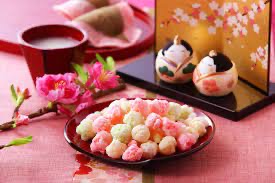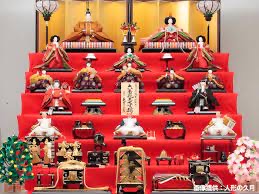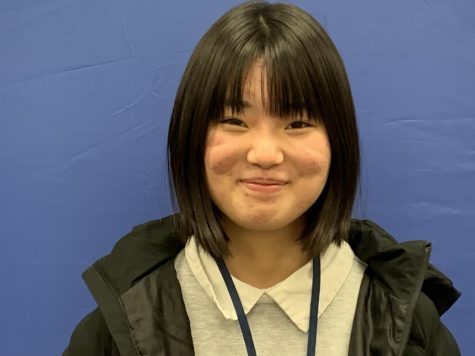March 3 Is “Girls’ Day” In Japan

March 4, 2022
Today, I wanted to introduce Americans to what is the traditional event of “Girls’ Day” in Japan. Also, I want to introduce how to make traditional foods for it.
In Japan, we usually have “Girls’ Day “on March 3 of each year. We call it Hinamatsuri. Hinamatsuri (Doll’s Festival) is an occasion to pray for young girls’ growth and happiness. Most families with girls display dolls for the Doll’s Festival called Hina-ningyo. Long ago, people threw paper dolls into rivers and in the sea to drive away evil spirits with them. The dolls depict the imperial court. A set of dolls includes the Emperor (odairi-sama), the Empress (ohina-sama), three court ladies (sannin-kanjo), five court musicians (gonin-bayashi), the minister of the left (sadaijin), the minister of the right (udaijin), and three servants (sannin-jougo). On this day, we eat traditional dishes like scattered sushi (chirashi-sushi), clam soup, sweet white sake (shirozake), rise cake cubes (hina arare), and diamond-shaped rice cakes (hishimochi) for the Doll’s Festival.
 Also, we usually eat rice crackers for celebration. We call them Hina-arare in Japanese. Hina-arare are bite-sized sweet rice crackers whose colors are pink, green, yellow and white. These four colors stand for the four seasons.
Also, we usually eat rice crackers for celebration. We call them Hina-arare in Japanese. Hina-arare are bite-sized sweet rice crackers whose colors are pink, green, yellow and white. These four colors stand for the four seasons.
The clam represents a happy couple, and the Japanese wish for girls to find the right person to spend the rest of their life with. We have clams in clear soup on Hinamatsuri. Hishimochi are very beautiful three layered rice cakes. They have a red, white, and green color. The each color has an important meaning. The red is for protection from evils, or peach blossoms; the white is for purity; and the green, for health and a long life. They are diamond-shaped cakes. It is believed to be as a shape of heart, or a shape of water chestnuts. It is believed that Hishimochi became a diamond-shaped in the beginning of Edo era (1603~1868). Originally, Hishimochi were a green color–only which were made of Japanese mugwort, which means good health and a long life. Then, white is the water chestnuts flavor, which means purity. Finally, for the red color, gardenia pigment was added in Meiji era (1868~1912). The red color represents a protection from evils and is the color of peach blossoms. Hishimochi’s color layers are from the top in this order: red, white, and green; or red, green, and white. The meaning of red, white and green layers is that a fresh green sprouts are waiting under the snow, and then peach blossoms come next.
This ancient tradition in Japan still holds great symbolic meaning–especially for girls.







